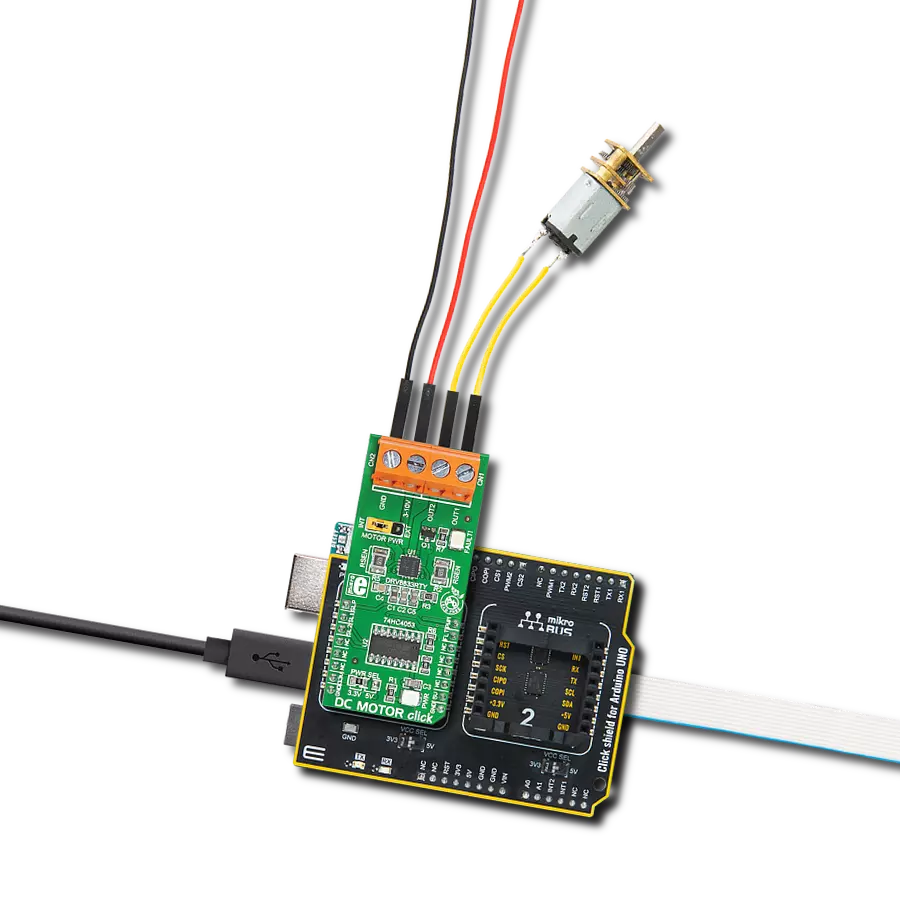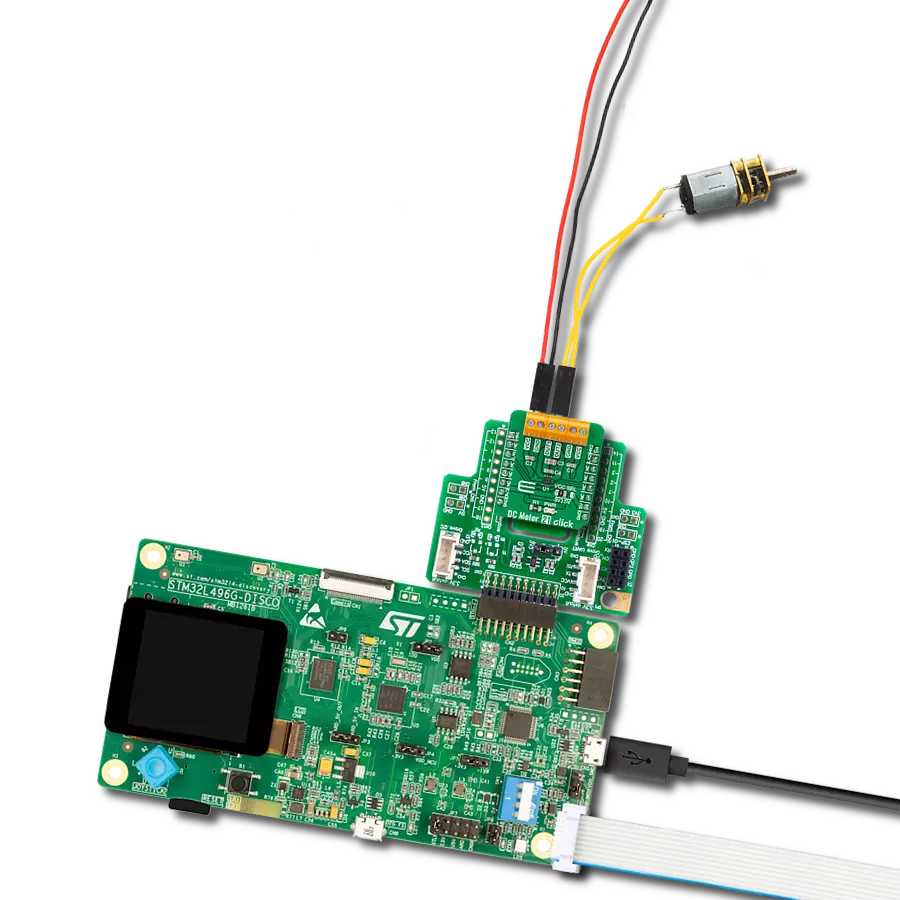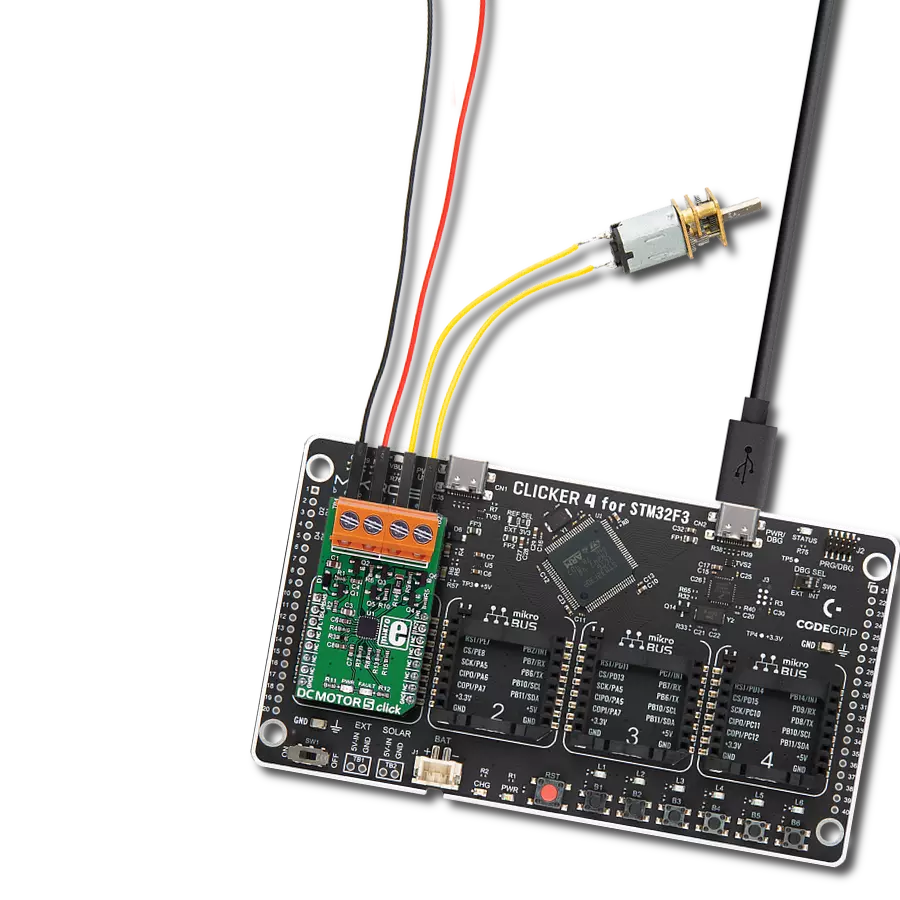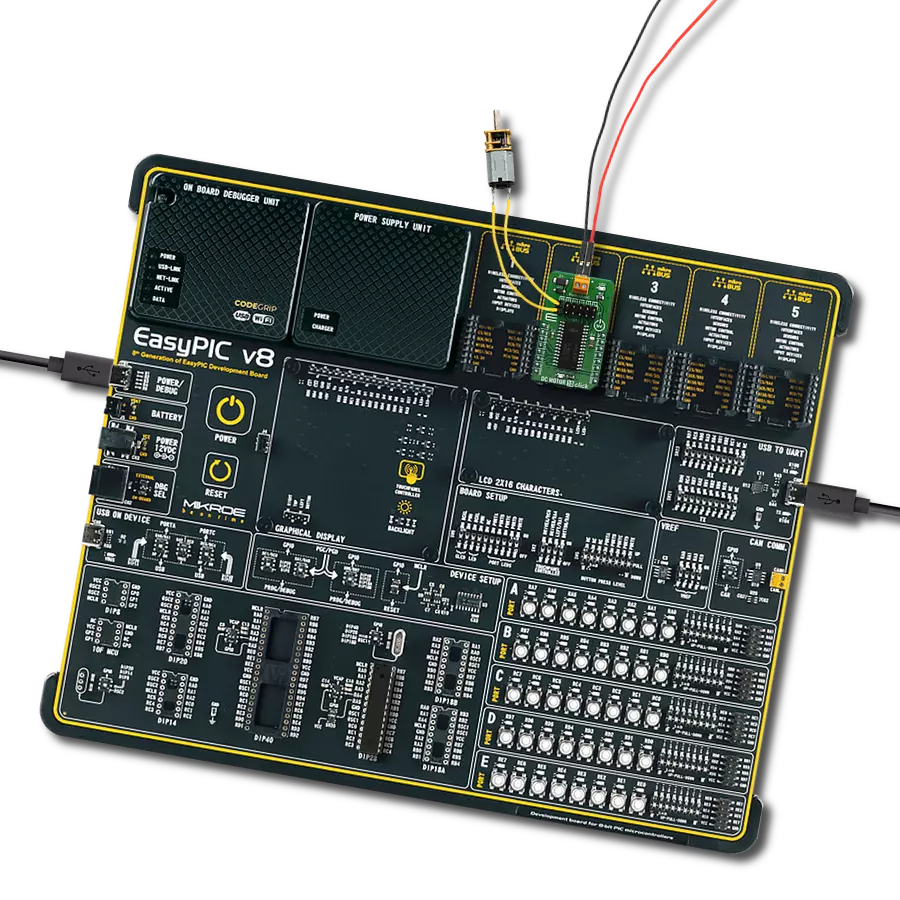优化您的电机,最大限度地提高效率,并充满信心地进行工程设计。拥抱高达5A电流的刷式电机控制!
A
A
硬件概览
它是如何工作的?
DC Motor 18 Click基于东芝半导体的TB9051FTG,这是一款电机驱动器,集成了用于直接驱动汽车用刷式直流电机的输出驱动器。虽然主要针对车辆发动机应用,如电子油门和阀门控制,但TB9051FTG也可以用于控制最高达5A的车载系统,例如控制后视镜和行李箱锁。控制功能包括与电机相关的(前进、倒车、制动)、PWM控制、电流限制控制、H端电流监视器、诊断输出,以及用于过流、过热和低/高电压的内置检测电路。DC Motor 18 Click使用多个GPIO引脚与MCU通信。使能引脚标记为EN,路由到mikroBUS™插座的CS引脚,可优化功耗,并用于电源开/关(驱动器操作许可)
目的。根据路由到mikroBUS™插座的PWM和RST引脚的PWM控制信号,可以选择前进/倒车/制动模式。实时监视电机驱动输出的H桥中流向高端的电流,用户可以选择电流监视的方式。在5V VCC电源供应的情况下,可以使用mikroBUS™插座上的AN引脚监视电流。在较小的电源(3.3V)情况下,可以通过OCM引脚和GND之间添加的电压分压器进行监视。选择可以通过标记为ADC SEL的板载SMD跳线执行。此Click板™还具有用于异常指示的额外LED。如果检测到诸如过温或过流/欠电压等状态,则通过红色LED(标记为DIAG)指示此类异常,该LED还通过中断INT引脚连接,用户还可以通过该引脚监视诊断引
脚的状态。此外,可以在过流检测时控制电机控制输出,通过标记为OCC的板载开关实现。该开关判断电机控制输出是否为ON(1)或OFF(0)。此板支持为TB9051FTG提供外部电源,可连接到标记为VM的输入端子,在4.5V至28V范围内工作,而直流电机线圈可连接到标记为OUT1和OUT2的端子。此Click板™可以通过VCC SEL跳线选择3.3V或5V逻辑电压级别运行。这样,既支持3.3V又支持5V的MCU可以正确使用通信线路。Click板™配备了一个包含易于使用的函数和示例代码的库,可用作进一步开发的参考。
功能概述
开发板
Nucleo-64搭载STM32L073RZ MCU提供了一个经济实惠且灵活的平台,供开发人员探索新的想法并原型化其设计。该板利用了STM32微控制器的多功能性,使用户能够为其项目选择性能和功耗之间的最佳平衡。它采用LQFP64封装的STM32微控制器,并包括一些必要的组件,例如用户LED,可以同时作为ARDUINO®信号使用,以及用户和复位按钮,以及用于精准定时操作的32.768kHz晶体振荡器。设计时考虑了扩展性和灵活性,Nucleo-64板具有ARDUINO®
Uno V3扩展连接器和ST morpho扩展引脚标头,为全面项目集成提供了对STM32 I/O的完全访问权限。电源选项具有适应性,支持ST-LINK USB VBUS或外部电源,确保在各种开发环境中的适应性。该板还配备了一个内置的ST-LINK调试器/编程器,具有USB重新枚举功能,简化了编程和调试过程。此外,该板还设计了外部SMPS,以实现有效的Vcore逻辑供电,支持USB设备全速或USB SNK/UFP全速,以及内置的加密功能,增强了项目的功耗效率和安全性。通过专用
连接器提供了额外的连接性,用于外部SMPS实验、ST-LINK的USB连接器和MIPI®调试连接器,扩展了硬件接口和实验的可能性。开发人员将通过STM32Cube MCU软件包中全面的免费软件库和示例得到广泛的支持。这与与各种集成开发环境(IDE)的兼容性相结合,包括IAR Embedded Workbench®、MDK-ARM和STM32CubeIDE,确保了平稳高效的开发体验,使用户能够充分发挥Nucleo-64板在其项目中的功能。
微控制器概述
MCU卡片 / MCU
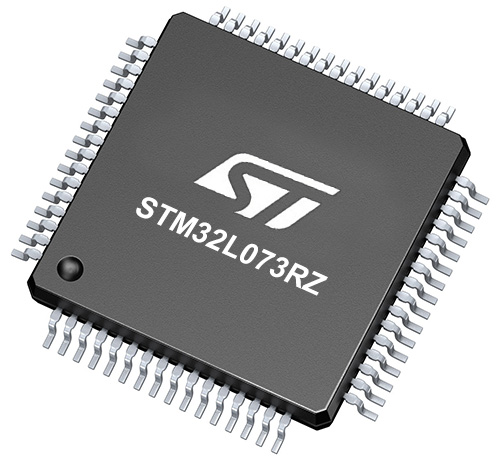
建筑
ARM Cortex-M0
MCU 内存 (KB)
192
硅供应商
STMicroelectronics
引脚数
64
RAM (字节)
20480
你完善了我!
配件
Click Shield for Nucleo-64 配备了两个专有的 mikroBUS™ 插座,使得所有的 Click board™ 设备都可以轻松地与 STM32 Nucleo-64 开发板连接。这样,Mikroe 允许其用户从不断增长的 Click boards™ 范围中添加任何功能,如 WiFi、GSM、GPS、蓝牙、ZigBee、环境传感器、LED、语音识别、电机控制、运动传感器等。您可以使用超过 1537 个 Click boards™,这些 Click boards™ 可以堆叠和集成。STM32 Nucleo-64 开发板基于 64 引脚封装的微控制器,采用 32 位 MCU,配备 ARM Cortex M4 处理器,运行速度为 84MHz,具有 512Kb Flash 和 96KB SRAM,分为两个区域,顶部区域代表 ST-Link/V2 调试器和编程器,而底部区域是一个实际的开发板。通过 USB 连接方便地控制和供电这些板子,以便直接对 Nucleo-64 开发板进行编程和高效调试,其中还需要额外的 USB 线连接到板子上的 USB 迷你接口。大多数 STM32 微控制器引脚都连接到了板子左右边缘的 IO 引脚上,然后连接到两个现有的 mikroBUS™ 插座上。该 Click Shield 还有几个开关,用于选择 mikroBUS™ 插座上模拟信号的逻辑电平和 mikroBUS™ 插座本身的逻辑电压电平。此外,用户还可以通过现有的双向电平转换器,使用任何 Click board™,无论 Click board™ 是否在 3.3V 或 5V 逻辑电压电平下运行。一旦将 STM32 Nucleo-64 开发板与我们的 Click Shield for Nucleo-64 连接,您就可以访问数百个工作于 3.3V 或 5V 逻辑电压电平的 Click boards™。
使用的MCU引脚
mikroBUS™映射器
“仔细看看!”
Click board™ 原理图

一步一步来
项目组装
实时跟踪您的结果
应用程序输出
1. 应用程序输出 - 在调试模式下,“应用程序输出”窗口支持实时数据监控,直接提供执行结果的可视化。请按照提供的教程正确配置环境,以确保数据正确显示。

2. UART 终端 - 使用UART Terminal通过USB to UART converter监视数据传输,实现Click board™与开发系统之间的直接通信。请根据项目需求配置波特率和其他串行设置,以确保正常运行。有关分步设置说明,请参考提供的教程。

3. Plot 输出 - Plot功能提供了一种强大的方式来可视化实时传感器数据,使趋势分析、调试和多个数据点的对比变得更加直观。要正确设置,请按照提供的教程,其中包含使用Plot功能显示Click board™读数的分步示例。在代码中使用Plot功能时,请使用以下函数:plot(insert_graph_name, variable_name);。这是一个通用格式,用户需要将“insert_graph_name”替换为实际图表名称,并将“variable_name”替换为要显示的参数。

软件支持
库描述
该库包含 DC Motor 18 Click 驱动程序的 API。
关键功能:
dcmotor18_set_speed_percentage- 设置速度输出百分比dcmotor18_set_enable- 设置使能引脚状态dcmotor18_read_an_pin_current- 读取AN引脚电流
开源
代码示例
完整的应用程序代码和一个现成的项目可以通过NECTO Studio包管理器直接安装到NECTO Studio。 应用程序代码也可以在MIKROE的GitHub账户中找到。
/*!
* @file main.c
* @brief DCMotor18 Click example
*
* # Description
* This example application showcases ability of Click
* board to control DC motors using PWM modulation in
* both directions and different speeds.
*
* The demo application is composed of two sections :
*
* ## Application Init
* Initialization of MCU communication modules (PWM, ADC, UART)
* and additioal gpio for control of the device. Then sets
* default configuration that enables device to control the DC motor.
*
* ## Application Task
* Drives motor in one direction from 0 to 100% of the speed using
* PWM, and then returns it back to 0. Then changes the rotation
* direction and repeats the process of increasing and decreasing
* acceleration.
*
* @author Luka Filipovic
*
*/
#include "board.h"
#include "log.h"
#include "dcmotor18.h"
static dcmotor18_t dcmotor18;
static log_t logger;
void application_init ( void )
{
log_cfg_t log_cfg; /**< Logger config object. */
dcmotor18_cfg_t dcmotor18_cfg; /**< Click config object. */
/**
* Logger initialization.
* Default baud rate: 115200
* Default log level: LOG_LEVEL_DEBUG
* @note If USB_UART_RX and USB_UART_TX
* are defined as HAL_PIN_NC, you will
* need to define them manually for log to work.
* See @b LOG_MAP_USB_UART macro definition for detailed explanation.
*/
LOG_MAP_USB_UART( log_cfg );
log_init( &logger, &log_cfg );
log_info( &logger, " Application Init " );
// Click initialization.
dcmotor18_cfg_setup( &dcmotor18_cfg );
DCMOTOR18_MAP_MIKROBUS( dcmotor18_cfg, MIKROBUS_1 );
err_t init_flag = dcmotor18_init( &dcmotor18, &dcmotor18_cfg );
if ( PWM_ERROR == init_flag )
{
log_error( &logger, " Application Init Error. " );
log_info( &logger, " Please, run program again... " );
for ( ; ; );
}
dcmotor18_default_cfg ( &dcmotor18 );
log_info( &logger, " Application Task " );
Delay_ms ( 500 );
}
void application_task ( void )
{
static int8_t duty_cnt = 1;
static int8_t duty_inc = 1;
float speed = duty_cnt / 10.0;
static uint8_t direction = 1;
dcmotor18_set_direction( &dcmotor18, direction );
dcmotor18_set_speed_percentage ( &dcmotor18, speed );
if ( dcmotor18.direction )
{
log_printf( &logger, "<<< " );
}
else
{
log_printf( &logger, ">>> " );
}
log_printf( &logger, "Speed: %d%%\r\n", ( uint16_t )( duty_cnt * 10 ) );
if ( 10 == duty_cnt )
{
duty_inc = -1;
}
else if ( 0 == duty_cnt )
{
duty_inc = 1;
direction = !direction;
}
duty_cnt += duty_inc;
Delay_ms ( 1000 );
}
int main ( void )
{
/* Do not remove this line or clock might not be set correctly. */
#ifdef PREINIT_SUPPORTED
preinit();
#endif
application_init( );
for ( ; ; )
{
application_task( );
}
return 0;
}
// ------------------------------------------------------------------------ END

























